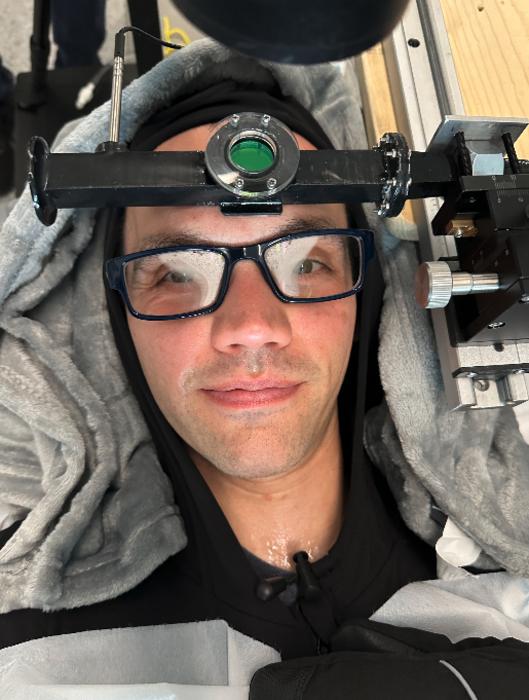Excessive heat across the United States is making this summer a season of sweat. Perspiration and its evaporation are crucial to keeping us cool when things get hot. But our understanding of how sweat evaporates is limited to the profuse phases of the process, when our bodies are coated in a sticky film or even pools of perspiration. Relatively is little is known about the dynamics behind initial phases of sweating, when tiny droplets are emitted by individual sweat glands and then quickly evaporate.

Credit: Konrad Rykaczewski / Arizona State University
Excessive heat across the United States is making this summer a season of sweat. Perspiration and its evaporation are crucial to keeping us cool when things get hot. But our understanding of how sweat evaporates is limited to the profuse phases of the process, when our bodies are coated in a sticky film or even pools of perspiration. Relatively is little is known about the dynamics behind initial phases of sweating, when tiny droplets are emitted by individual sweat glands and then quickly evaporate.
“There are mechanical engineering researchers around the world, myself included, who are devoted to understanding the different parameters of droplet behavior on almost every industrial substrate in electric power production, food processing, inkjet printing and more,” says Konrad Rykaczewski, an associate professor at Arizona State University. “So, I was amazed that no one has looked closely at sweat on skin.”
Seeking to fill this gap in knowledge, Rykaczewski and his colleagues have developed new research tools—including a wind tunnel-shaped, ventilated capsule with an infrared window enabling high-magnification video imagery of pulsating sweat droplet formation and evaporation on the foreheads of human subjects at a scale down to 20 microns, less than the width of a single strand of hair.
Early experiments with the equipment have revealed that the mass transfer coefficient—a measure of how much evaporation increases as more skin area is covered by sweat—and therefore the cooling power of initial phase or droplet sweating can be three times that of later phase film or pooled sweating. It also appears that much of that evaporative efficacy happens at the level of individual sweat ducts near or under the outer layer of skin.
“This has very interesting implications for textile design and apparel for hot climates,” says Rykaczewski. “And as we face a future of more extreme heat, we want all the resources possible to deal with it.”
Results from the team’s work have just been published as a paper in the journal iScience.
Rykaczewski appreciates the work of those partnering on this interdisciplinary team, including Professor Stavros Kavouras from ASU’s College of Health Solutions, Assistant Professor Gokul Pathikonda and Associate Professor Heather Emady from ASU’s Ira A. Fulton Schools of Engineering, postdoctoral researchers Ankush Jaiswal, Kambiz Sadeghi and Ankit Joshi; as well as graduate students Cibin T. Jose, Ramesh Rajesh, and Vinay Nanani.
Journal
iScience
Method of Research
Experimental study
Subject of Research
People
Article Title
Simultaneous imaging of multi-pore sweat dynamics and evaporation rate measurement using wind tunnel ventilated capsule with infrared window
Article Publication Date
17-Jun-2024
COI Statement
The authors declare no competing interests.



